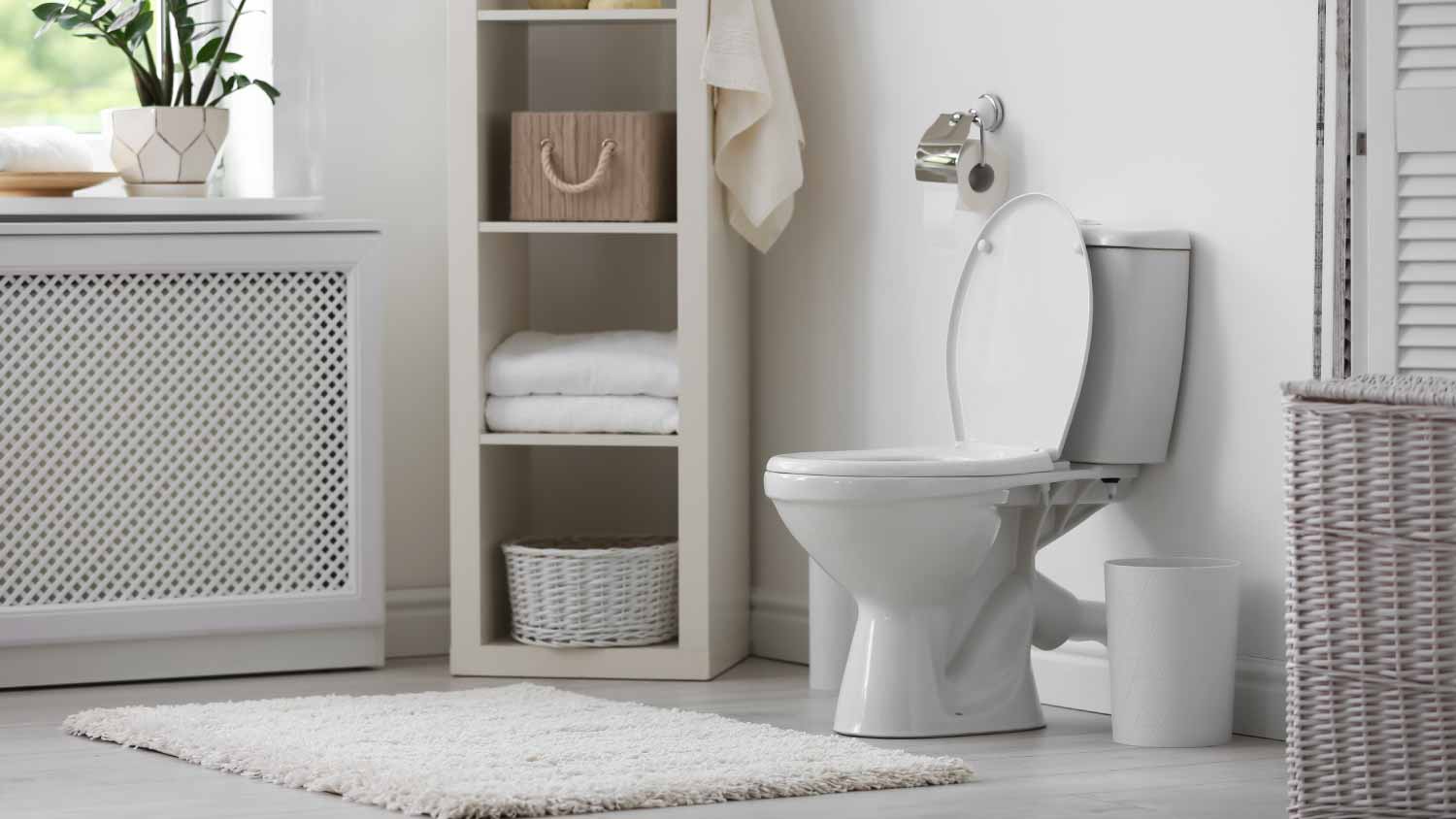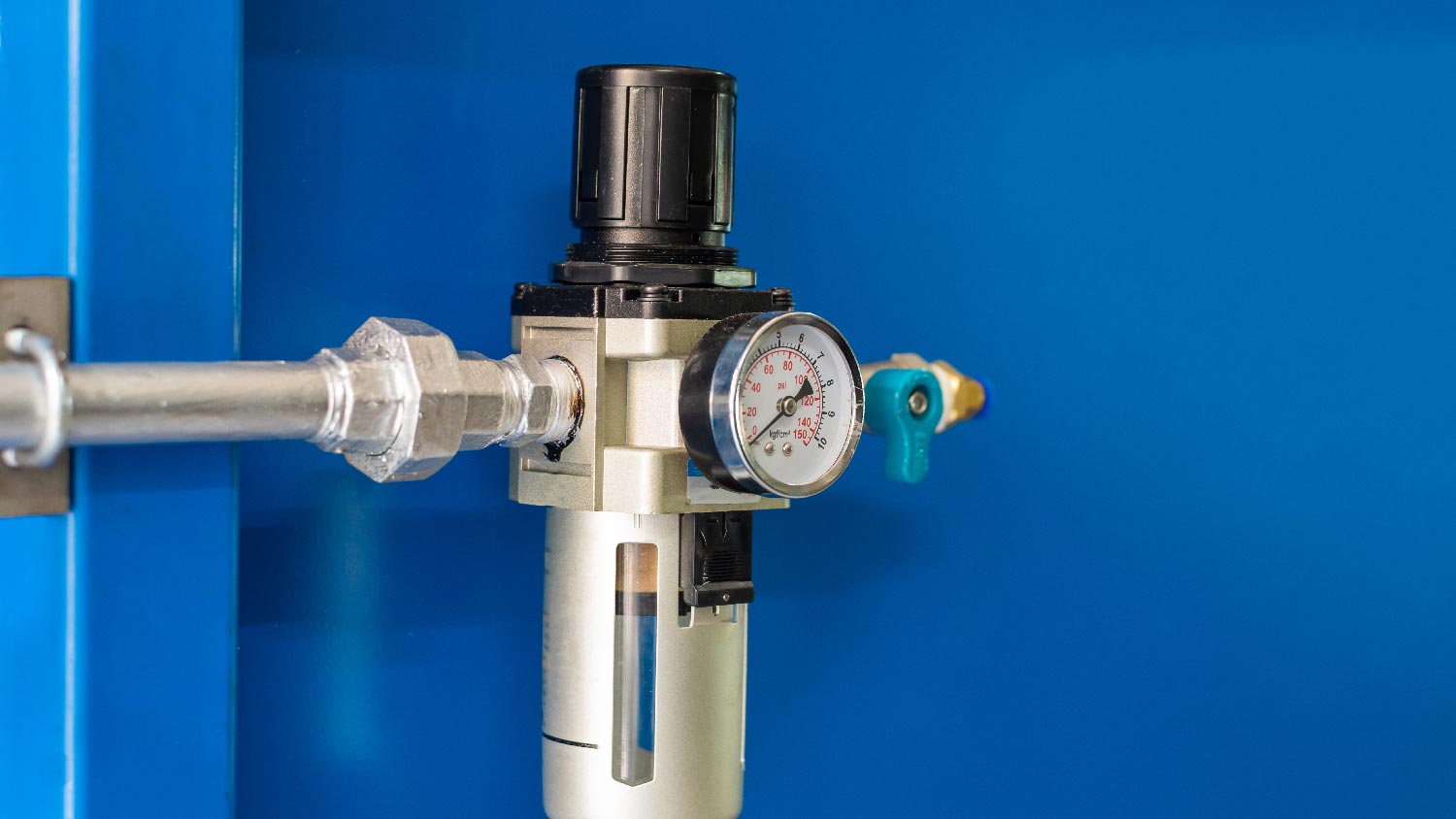
Emergency plumbers cost between 1.5 and 3 times as much as a typical plumber. Get specifics for your plumbing issue and city in our guide.
Flush away confusion with this closer look at toilet traps


Toilet traps connect the toilet bowl to the wastewater pipe.
Water inside the trap forms a seal that keeps sewer gases from coming out.
P-traps are P-shaped and drain out the wall behind the toilet.
S-traps are S-shaped and drain down to the ground or floor.
Toilets with P-traps are more common, but S-trap toilets have their uses.
A toilet trap sounds like something you’d want to steer clear of, but it’s actually a key component of a toilet drain that helps keep sewer gases out of your home. There are two types of toilet traps—P-traps and S-traps—that accomplish the same goal with different designs. Here, we go into detail about toilet P-traps versus S-traps, the pros and cons of each, and which is best for your needs.

Both toilet P-traps and S-straps are part of toilet drainage systems and help prevent siphoning. In other words, sewer gases stay in the plumbing system and won’t make your home smell. However, when comparing a toilet P-trap and S-trap, P-traps feature a modern design, reduce siphoning risks, and meet updated plumbing codes. S-traps are less expensive and fit older plumbing systems, but they’re more likely to allow toilet gases to escape and may not meet modern plumbing codes.

A toilet P-trap is the part of the toilet that drains the bowl into the waste pipe and down into the home’s wastewater system. It gets its name from its shape—a P- or U-shaped bend in the pipe that retains a little water to create a barrier between septic gases and the bathroom. P-traps connect to a horizontal drain in the wall behind the toilet, and most have a separate plumbing vent that leads gases up and through the roof.
| Pros | Cons |
|---|---|
| Shape creates a water seal against siphoning | Requires a vent pipe |
| Venting lowers the risk of siphoning | Horizontal connection takes up more space |
| Meets modern plumbing code standards | Waste can collect in the trap and form clogs |
Best for:
Modern homes and plumbing systems
Toilets with horizontal drainpipe hookups
Compliance with modern building codes
Larger bathrooms with more space for exit pipes
While both P-traps and S-traps create a water seal against siphoning, the shape of P-traps creates an effective water seal that traps gases. The additional vent pipe most P-trap toilets require further lower the risk of gas siphoning. Most modern plumbing codes require P-trap toilets for residential installations.
The additional vent for P-trap toilet installations can increase the overall cost and complexity of the project. This is also true for installations in existing homes that don’t already have P-trap toilets or vent stacks. A plumber can inspect your plumbing and give you an estimate for the necessary work.
Due to their shape, P-trap toilets must have horizontal waste pipe exits, requiring more space behind the toilet. This makes them challenging or impossible to fit in smaller bathrooms. Likewise, the tight bend in the pipe can trap toilet paper and debris, leading to potential blockages that require more frequent maintenance or work to unclog your toilet.

These toilets have an S-shaped trap that leads out of the toilet bowl and connects to an outlet pipe in the floor. Like P-trap toilets, S-traps have a bend that holds water to block sewer gas siphoning, but the shape isn’t as effective at retaining the water seal. They don’t require an added vent pipe. Toilet S-traps are now less popular, and you’ll most commonly see them in older homes.
| Pros | Cons |
|---|---|
| Compact design fits smaller bathrooms | Can lose its water seal and siphon gases |
| Doesn’t require additional venting | Restricted or prohibited in some codes |
| Works with older plumbing systems | Less popular, so harder to find parts and service |
Best for:
Direct replacements for old S-trap toilets
Existing homes with older plumbing systems
Smaller bathrooms that need toilets with a vertical trap design
Homes with plumbing codes that allow for S-trap toilets
Because S-trap toilets empty into wastewater pipes in the floor rather than the wall, they have a smaller footprint than P-trap toilets and fit into smaller spaces. They also don’t need additional venting, so installation is faster, less expensive, and less invasive in spaces that don’t already have stack vents. This makes them one of the better types of toilets for existing homes and older plumbing systems built to accommodate S-trap toilets.
The shape and lack of auxiliary venting make S-traps more prone to siphoning, so they’re more likely to lose their water seals and allow sewer gas smells into the home. Because of this, many building codes restrict or prohibit them in new construction. And due to this, they’ve fallen out of popularity, so it can be harder to find replacement parts and repair services for them.
See how these two toilets compare in different categories, including options, compatibility with modern plumbing systems, price, and ease of installation.
Depending on the model, you may be unable to tell which trap a toilet has based on its exterior appearance. That said, P-trap toilets tend to have a sleeker or nicer appearance than older S-trap toilets. On the other hand, they may have a visible pipe extending out the back of the toilet and into the wall, which can be visibly awkward and harder to clean than S-trap toilets that drain directly under the bowl. If appearance matters to you, choose a toilet that fits your home’s plumbing system and your aesthetic preferences.
P-traps are a newer kind of toilet that S-traps, so they come with more options and customizations. You can find them with dual-flush capabilities and in various colors, finishes, heights, and sizes. Options to fit different toilet drainpipe sizes are also available. The options for S-trap toilets are more limited because they’re not as common and aren’t allowed in new construction codes.
P-trap toilets are the more modern toilet, so they’re more likely to be compatible with modern plumbing systems and new construction. Most new construction codes require P-trap toilets because of their superior siphoning prevention, so plumbers install plumbing systems with the required wall pipes and vents to accommodate them.
S-trap toilets cost less to buy and install since they don’t need extra venting like P-trap toilets. However, repairs can be more expensive, and replacement parts and repair options may be limited because S-traps are becoming less common.
Since P-traps connect to the wall and not the floor, it can be easier to access areas that need repair or service. They also meet modern plumbing codes, so you’ll likely find it easier to find replacement parts or services. However, they also require ventilation that will need to be installed in older homes.
If cost is your main concern, compare the two trap options and how they fit into your home plumbing system when creating your toilet installation budget.
S-trap toilets don’t need added plumbing or venting, so they’re easier to install. This is especially true if you’re replacing an older S-trap toilet. DIYers will find it easier to swap out an S-trap toilet with a model that has the same type of plumbing connections than updating to a P-trap toilet, which connects to a pipe in the wall and needs additional venting.
P-trap toilets may be more attractive to home buyers because they comply with modern building codes, have more options, and are less likely to have siphoning trouble. S-trap toilets can signal outdated plumbing, and buyers may not like the idea of added costs, such as adding vents and drainpipes, in future remodels. For these reasons, P-trap toilets can assure buyers that the home they’re considering was thoughtfully designed and maintained and has reliable, modern fixtures.
While P-trap toilets are best for new construction, S-trap toilets may be the best fit for replacing existing S-trap toilets in homes without additional toilet vents or in smaller bathrooms. If you still aren’t sure which is the best choice for your home, call a toilet installer near you for personalized advice.
We needed a couple of minor plumbing repairs done. Lopez Plumbing arrived on time and was very respectful of our time and space and have reasonable advice about the maintenance of equipment and proactive steps to take.
Quality plumbing work!!! Very responsive and transparent about all costs up front. Overall I was very satisfied with his professionalism and quality of work!!!
Overall much higher quality work, now the walls are plumb and square, tile pattern is correct and well balanced. The bathroom design is exactly the same other than a few minor details where they suggested a different angle or joint but if you could see them side by side there's no comparison...
I have rental properties and every time I hired this company for any plumbing-related issue, they always solved the problem. I would not work with anyone else, I trust them completely. I have been using this company for years.
We purchased a home that was need of a bit of work and I had great difficulty finding good firms that charged fair prices and performed well. I first hired JMZ to clean the yard and cut the grass. I saw Jose's truck in the area and called the number on the side. In the past two years Jose and...
Andrew and his crew at Islander painting are precise and clean up after their work. I would definitely hire them again!!!
Armend Gojani at Rite Plumbing and Heating is incredibly nice, courteous, knowledgeable and honorable. He has been a pleasure to work with, and so far most of the plumbing problems have been fixed - one more to go.
Clayton and his associate were fantastic! He accommodated my request to remove a considerable amount of stuff from a residential home in Port Orange (even changing my original appointment date very last minute at my request). He was early to the job, careful not to remove or damage anything...
Professional, courteous and great quality. Would hire the team again.
Tell me that unless I pay $95 they will not come out to give me an estimate
From average costs to expert advice, get all the answers you need to get your job done.

Emergency plumbers cost between 1.5 and 3 times as much as a typical plumber. Get specifics for your plumbing issue and city in our guide.

Wondering how much shower valve replacement costs? The answer depends on type, labor, and materials—but foresight and research can save you some money.

The cost to cap a gas line is relatively low, as plumbers can handle the job in roughly an hour. We break down cost factors and DIY considerations.

Find out the average water pressure regulator replacement cost, key price factors, and tips to save on your project. Get transparent, expert-backed cost info.

Read how to properly vent your toilet, sink, and shower and learn the importance of effective plumbing ventilation to ensure a well-functioning and odor-free bathroom.

Frozen underground pipes can lead to costly damage to your home. Use this guide to learn how to safely thaw them, prevent future freezes, and protect your home from expensive water damage.